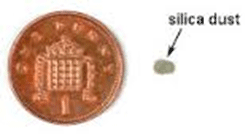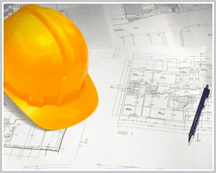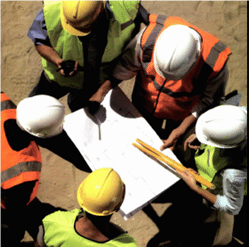 I have noticed over recent weeks that, despite our articles about “Treating Health the same as Safety” and the legal requirement of employers who require operatives to wear Respiratory Protective Equipment, RPE, to have that RPE specifically Fit Tested to the wearer. This is not always happening.
I have noticed over recent weeks that, despite our articles about “Treating Health the same as Safety” and the legal requirement of employers who require operatives to wear Respiratory Protective Equipment, RPE, to have that RPE specifically Fit Tested to the wearer. This is not always happening.
So this week I thought that I would look again at the health risks, the types and use of RPE and the legal requirement of employers to ensure operatives are Face Fit Tested.
This week’s 2 recent HSE cases look at accidents that should never have happened.
- 21-year-old Matthew Hoare, from Canterbury was killed when a tyre exploded.
- One of the trailer hydraulic ramps failed to lower and Andrew Adams, aged 61, attempted to carry out a repair. He died from severe crushing injuries.
As ever, if you have a subject that you would like us to cover one week, please contact us by phone 01458 253682, email or via our Facebook page or by Twitter.
Are you providing a Perfect Fit for your respirator?
Many workers wear respirators or breathing apparatus to protect their health in the workplace. These devices are collectively known as respiratory protective equipment (RPE). Respirators filter the air to remove harmful substances and breathing apparatus (BA) provides clean air for the worker to breathe.
So what are the risks?
Work activities may result in harmful substances contaminating the air in the form of dust, mist, vapour, gas or fume. For example, when:
- cutting a material such as stone or wood;
Silica is a natural substance found in varying amounts in most rocks, sand and clay. It is found in many of the building products that are used on sites every day of the week. For example,
- sandstone contains more than 70% silica,

- granite might contain 15-30%.
Silica is also a major constituent of construction materials such as bricks, tiles, concrete and mortar.
The law requires companies to make sure employees are breathing in levels of Silica dust well below the amount illustrated in the picture above.
Many woods, especially hard woods, are carceongenic and yet I have seen workshops covered in a layer of hardwood dust
- using a product containing volatile solvents;
- handling a dusty powder;
- welding stainless steel.
Workers may also need to work in areas where oxygen levels are or may become low, for example:
- confined spaces, such as a trench, silo or tank.
Table 1 Examples of the different forms of hazardous substances
| Form | Properties | Examples |
|---|---|---|
| Solid particles | Particles of solid material, including aerosols, dusts, fibres, smokes and fume | Asbestos dust Engine exhaust particles and fume Lead dust and fume Stone dust Welding fume Wood dust Smoke Fungal spores and parasites Bacteria and viruses Flour |
| Liquid particles | Fine sprays, mists and aerosols made up of small droplets of liquid | Sprayed liquids:
Mists:
|
| Vapour | Gaseous forms of a solid or liquid | Solvent vapour Mercury vapour |
| Gas | Carbon monoxide Engine exhaust gases Sewer gas Chlorine |
Incredibly there are over 13,000 deaths each year in the UK as a result of Occupational Respiratory Diseases. Yes, many of these are as a result of past practices but there are around 10,000 new cases of lung and workplace caused respiratory diseases reported each year.
Occupational resiratory disease is widely recognised as a major cause of work related ill health and fatalities.
RPE types
There are many different RPE types designed to:
- protect the wearer from a variety of hazards;
- suit a variety of work situations;
- match the specific requirements of the wearer.
Warning: Respirators must not be used in oxygen-deficient atmospheres. You will require suitable breathing apparatus and should seek professional advice. T he HSE publication L101 Safe work in confined spaces2 provides further information.
he HSE publication L101 Safe work in confined spaces2 provides further information.
RPE is available in different sizes to allow for the facial differences of workers. Gender, ethnicity, build and many other factors mean that one size of facepiece will not fit everyone.
RPE must be both adequate and suitable:
- Adequate – It is right for the hazard and reduces exposure to the level required to protect the wearer’s health.
- Suitable – It is right for the wearer, task and environment, such that the wearer can work freely and without additional risks due to the RPE.
The two main types of RPE are respirators and breathing apparatus:
 Respirators (filtering devices) use filters to remove contaminants from the air being breathed in. They can be either:
Respirators (filtering devices) use filters to remove contaminants from the air being breathed in. They can be either:
- non-powered respirators – relying on the wearer’s breathing to draw air through the filter;
- powered respirators – using a motor to pass air through the filter to give a supply of clean air.
Breathing apparatus needs a supply of breathing-quality air from an independent source (e.g. air cylinder or air compressor)
What the law says
The laws governing the control of harmful substances in the workplace, and their supporting ACOP, say that you should only use RPE after you have taken all other reasonably practicable measures to prevent or control exposure.
By going through the risk assessment process required by these laws, you can determine whether the use of RPE is necessary in your workplace. If you write your justification for using RPE on your risk assessment record you should remember the reasons behind your chosen control regime and be able to adapt it in the future as necessary. If you have fewer than five employees you are not legally required to record your risk assessment.
The Health and Safety at Work etc Act 1974 and the Management of Health and Safety at Work Regulations 1999 require you to provide and maintain a safe working environment, so far as is reasonably practicable. They set out the basicrequirements for you to follow.
In addition to the COSHH Regulations 2002, RPE may need to be used to satisfy requirements in the following pieces of legislation. You will need to consider whether any of these Regulations apply to you and comply with any specific requirements they contain on RPE:
- Control of Asbestos Regulations 2012;
- Control of Lead at Work Regulations 2002;
- Ionising Radiations Regulations 1999;
- Confined Spaces Regulations 1997.
For RPE use that is not covered by any of the above Regulations, employers and employees have duties under the Personal Protective Equipment at Work Regulations 1992.
For all tight fitting RPE, including industry disposable, half and full face masks, it is a legal requirement that at the initial selection of the product the face piece is specifically Fit Tested to the wearer.
RPE must be Adequate and Suitable
This means:
- Adequate – It is right for the hazard and reduces exposure to the level required to protect the wearer’s health.
Hazardous substances can be present in the air as particles (solid or liquid), vapour or gas. Under certain conditions, they can exist in more than one form at the same time (eg during paint spraying). You need to identify the form of the hazardous substances in the air to select the right RPE. Note that:
- solid and liquid forms will be present as particles;
- fine sprays and mists are made up of liquid particles (droplets);
- fumes are very fine solid particles and not gas or vapour;
- smoke, fume and airborne liquids require RPE that is suitable for use against particles.
In addition to the above, volatile liquids may under certain conditions become airborne as both particles and vapour.
Suitable – In addition to making sure the RPE you use is adequate to control the hazards, you need to ensure it is suitable for:
- the individual wearer – Do they have facial hair or markings that could prevent a good seal between the wearer’s face and the RPE? Do they have any pre-existing medical conditions? Do they wear spectacles or contact lenses?
- the tasks they are doing – including work-rate. Wear-time. Vision requirements. Other head-worn PPE can potentially interfere with RPE, preventing one or more of the components from working correctly (eg eye protection, ear protection and safety helmets. Where possible, choose equipment where the different forms of protection required are combined, eg eye, face, head and respiratory protection provided by a powered helmet respirator.
- the environment in which they are working for example temperature or humidity.
Carrying out a fit test
If you are considering RPE with a tight-fitting facepiece, you should make sure that each wearer undergoes a fit test. Remember, people come in different shapes and sizes, so facial differences will mean that one kind of RPE is unlikely to fit all. The differences are even more significant between men, women, and people of different ethnicity. If the RPE does not fit, it will not protect the wearer.
Facepiece fit testing is a method of checking that a tight-fitting facepiece matches the wearer’s facial features and seals adequately to their face. It will also help to identify unsuitable facepieces that should not be used. Remember that tight-fitting RPE will only provide effective protection if the wearer is clean shaven, so they should also be clean shaven when fit tested. But note that you cannot make an employee shave. So you must consider if somebody else in your employ can do the work instead, and the bearded employee do their job or, if you must have the bearded employee do this task, they must be given a powered respirator.
The following chart looks at Suitability factors to consider
| Suitability factor | Why | Solution |
|---|---|---|
| Work rate | Higher work rates may increase breathing and sweating, which can affect the performance of some types of RPE. Higher breathing rates can cause contaminants to leak in, and sweating can cause facepieces to slip and leak. | Light work rate: Sedentary work: assembly or sorting of light materials, arm and leg work, drilling. Most RPE would be suitable. Medium work rate: Sustained hand and arm work: sawing, planing or chiselling wood, plastering, filing, work with pneumatic breaker, intermittent handling or carrying moderately heavy material, shovelling, sledgehammer work, concrete block laying, pushing or pulling heavily laden hand-cart. Consider more comfortable RPE such as powered respirators or loose-fitting devices. Heavy work rate: Heavy manual work: shovelling or digging, climbing, ramps or ladders. Powered respirators or BA are recommended.
|
| Wear time | Unpowered tight- fitting masks become uncomfortable to wear for long periods and wearers may be tempted to loosen or remove the RPE. | Wear time more than 1 hr: Using powered RPE with tight- fitting masks or loose-fitting facepieces will help minimise fatigue and discomfort. |
| Abnormal temperature or humidity | In hot and humid conditions, wearing RPE increases heat stress, sweating and discomfort. Airflow associated with powered respirators or airline BA can cause chilling effects. | Extreme heat – Using powered respirators or airline BA would help to minimise these problems. Proprietary cooling devices are available but consume a lot of compressed air. Extreme cold – Proprietary heating devices are available but consume a lot of compressed air. |
| Facial hair and markings | Affects where a face mask seals to the face and will cause leakage. |
Consider the use of loose-fitting facepieces, which do not rely on a tight seal in this region. |
| Spectacles | Spectacles with side arms are incompatible with full face masks as they break the face seal and they may also interfere with the fit of half masks. | RPE manufacturers can supply special frames, which fit inside their masks. It is the responsibility of the employer to find and provide an appropriate solution. |
| Vision | If you need to see fine details when wearing RPE, but don’t need to protect the eyes from the airborne hazard, RPE types which include face protection (full face masks, visors, hoods) may not be ideal because they can be prone to scratching, misting and surface contamination. | Consider half mask RPE, provide adequate lighting, or choose designs that resist scratching and internal misting. Powered respirators or airline BA are more resistant to misting. Some types include ‘tear-off’ consumable visors. |
| Communication | All RPE affects your ability to communicate. | If your work requires clear and precise communication you should use RPE incorporating proprietary communication devices (ranging from simple speech diaphragms to complex radio intercom systems), or other suitable forms of communication. |
| Flammable or explosive atmospheres | RPE can be a source of ignition. | If you cannot avoid working in potentially flammable or explosive atmospheres, including oxygen-enriched atmospheres (levels above 21%), you may need to use intrinsically safe, light alloy-free and antistatic RPE. |
| Use of air power tools | Air jets from power tools (pneumatic or electric) can make RPE valves leak. Connecting air-powered tools and your RPE to the same air supply will affect RPE performance. | Shield tools or seek alternative design. Use RPE designs with valves remote from tool exhaust location. Ensure that your compressor can supply enough air for both at the same time. |
| Contact lenses | Wearers may suffer discomfort or, if the lenses are dislodged, the wearer may remove the RPE to replace them while still in the hazardous area. * | Use spectacles (in mask if necessary) instead. |
| Mobility | Snagging and damage to trailing hoses. Added bulk of fan units/air cylinders in tight spaces. | Ensure adequate inspection regime and consider other RPE types. |
* The lenses can also jam in the RPE valves, leading to loss of protection.
If you need further information please call us on 01458 253682 or send us an email.
Training Courses
We are running new courses again in 2016 and the dates and details of the latest courses are listed below they are:
- Liability for Accidents and Ill Health at Work
- CDM Regulations 2015 – An Awareness Course
- SMSTS (Site Management Safety Training Scheme)
But remember we are still available for running “In House” courses and we have now also added a new training service for our customers.
Site Manager Safety Training Scheme
(Part of Construction Skills “Site Safety Plus” Suite of Courses)
We have formed an association with a local company TQ Excel who are one of the UK’s leading providers of accredited training to the highways sector of the construction industry.
AS a result of this we can now offer the SMSTS (Site Management Safety Training Scheme)
The Site Management Safety Training Scheme forms part of the Construction Skills (CITB) Site Safety Plus range of courses which are highly regarded within the construction industry.
The 5 day training course is aimed at site managers wishing to develop a more in depth legal, moral and social understanding of their role and also teaches delegates how to manage on-site health and safety in accordance with current legislation.
We also offer the 2 day SSSTS Training Course (Site Supervisor Safety Training Scheme) which is a 2 day course aimed at those with on-site supervisory responsibilities.
We also can now offer NRSWA courses.
These qualifications are for those involved in the Excavation and Re-instatement of the highway and are specified under the New Roads and Street Works Act 1991. They are a legal requirement for “statutory undertakers” (i.e. Utility Contractors) and for those working under “section 50 licenses” (Drainage works etc).
Where works are subject to the Act there must be a minimum of 1 qualified operative on every site that is qualified for the operations being carried out and there must be a Supervisor available to visit the site at least on a daily basis.
The qualifications are also often specified by client organisations and local authorities when appointing contractors for works involving excavation or reinstatement of the highway for other purposes.
Liability for Accidents and Ill Health at Work 
Seminar Objective Training /CPD Certificate issued
This one-day course looks at your liability, as Company Owner, Director, or Manager. The course will look at a number of case studies and explain the legal requirements of the Employer, Managers, and your Safety Adviser.
Seminar Outline
- Legal framework and legislation (Criminal and civil liabilities)
- Roles and responsibilities of Directors, senior management team and the H&S Advisers
- An HSE Investigation
- Criminal Law – Who’s Liable
- The New powers of the Courts
- Compensation – Who’s Liable
- Corporate Manslaughter – The key things to know
- When it is the employee’s fault
- How to reduce your liability as an employer
- How you could be personally liable
- Successful cases against Health & Safety Advisers
Benefits of Attending
- By attending this course you will understand your liability regarding Health & Safety at work. And what you need to do to protect yourself and your business.
- How the Authorities investigate incidents and how the courts fine you.
Course Duration: 1 day
| COURSE REF | DATE(s) | LOCATION |
|---|---|---|
| LIAB 1602 | Thursday 9th June 2016 | Taunton Racecourse, Orchard Portman, Taunton, Somerset TA3 7BL |
Fee: £150 to include Course notes, mid-morning & afternoon refreshments, Finger buffet lunch, CPD Certificate (Fee subject to VAT)
CDM Regulations 2015 – An Awareness Course
Course Objective Training /CPD and APS Certificates
The Construction (Design and Management) Regulations 2015 (CDM 2015) come into force on the 6th of April 2015, and will apply to all construction projects in the UK incl. Domestic projects
This CDM 2015 awareness training course has been developed to provide all duty holders with an understanding of their role and responsibilities under CDM 2015.
Seminar Outline
- Introduction to CDM 2015
- Notification
- Client Duties and Domestic Clients
- Principal Designer Duties
- Principal Contractor Duties
- Designer Duties
- Contractor Duties
- CDM Documentation
Benefits of Attending
- These courses give an overview of the requirements for Clients, Principal Designers, Principal Contractors, Contractors, Designers and Workers, and how the regulations apply to construction projects.
- An individual who successfully completes this CDM2015 Awareness Course may claim points towards membership of the Association for Project Safety – APS
Course Duration: 1 day
| COURSE REF | DATE(s) | LOCATION |
|---|---|---|
| CDM2015 1602 | Thursday 16th June 2016 | Taunton Racecourse, Orchard Portman, Taunton, Somerset TA3 7BL |
Fee: £170 to include Course notes, mid-morning & afternoon refreshments, Finger buffet lunch, a Certificate of Training and APS Certificate (Fee subject to VAT).
Site Manager Safety Training Scheme
(Part of Construction Skills “Site Safety Plus” Suite of Courses)
Target Audience
Site managers, agents and persons who are, or are about to be, responsible for planning, organising, monitoring, controlling or administering groups of staff and workforce.
Aims & Objectives
To help site managers, agents and supervisors to:
- Manage health & safety on site in accordance with current legal provisions, and within the context of their management or supervisory role
- Develop an understanding of responsibilities and accountability for site health, safety and welfare
- Recognise that a safe site is efficient, economical and productive
Delegates will, at the end of the training, be aware of and able to:
- Implement all health, safety, welfare and environmental legislation which affects them during their work
- Implement new guidance and industry best practice
- State their duties and responsibilities with regards to health, safety, welfare and the environment
Course Notes / Assessment / Certification
This 5 day Course will be held at The Oaktree, Bristol Road, Edithmead, Highbridge, Somerset TA9 4HA (6th – 10th June 2016)
The all-inclusive rate of £495.00 + vat per delegate will be payable at the time of booking.
If you have any questions about these courses or any other training or would like us to run a particular course for you, call Jon Wilkins of the Wilkins Safety Group on 01458 253682 or email him.

Your business is safer in our hands
